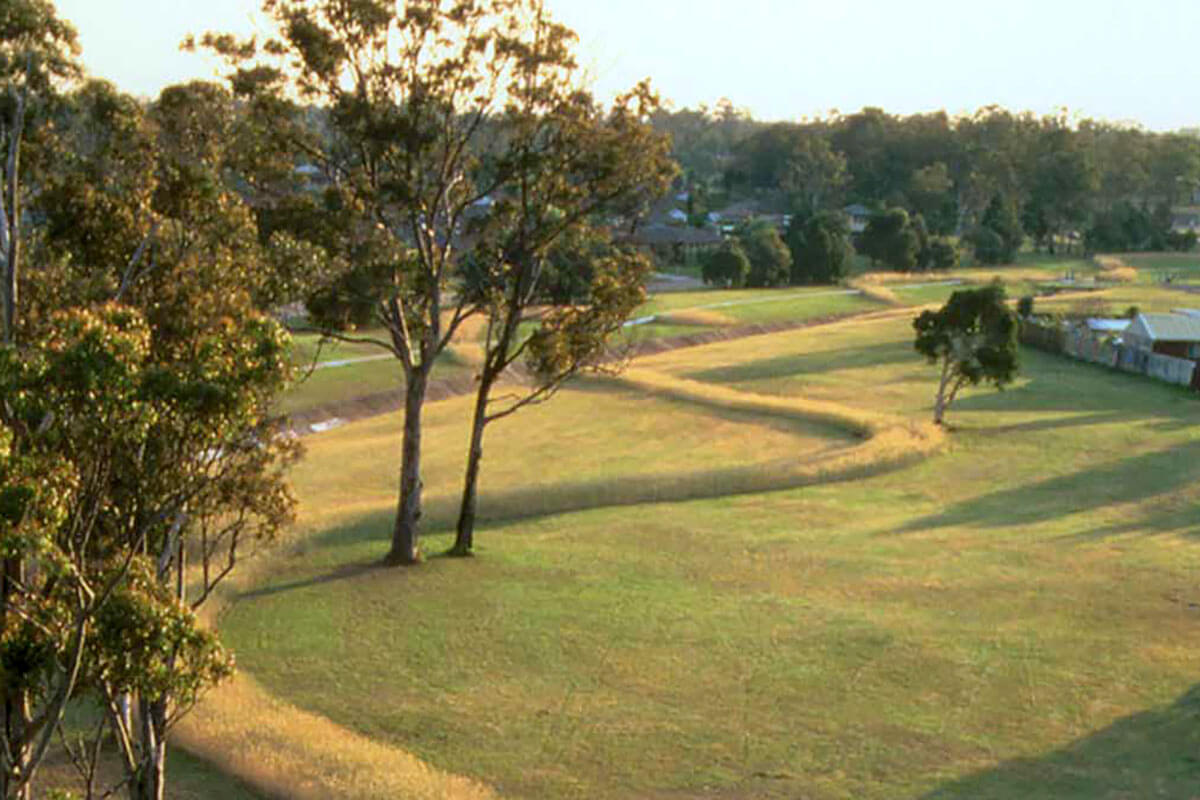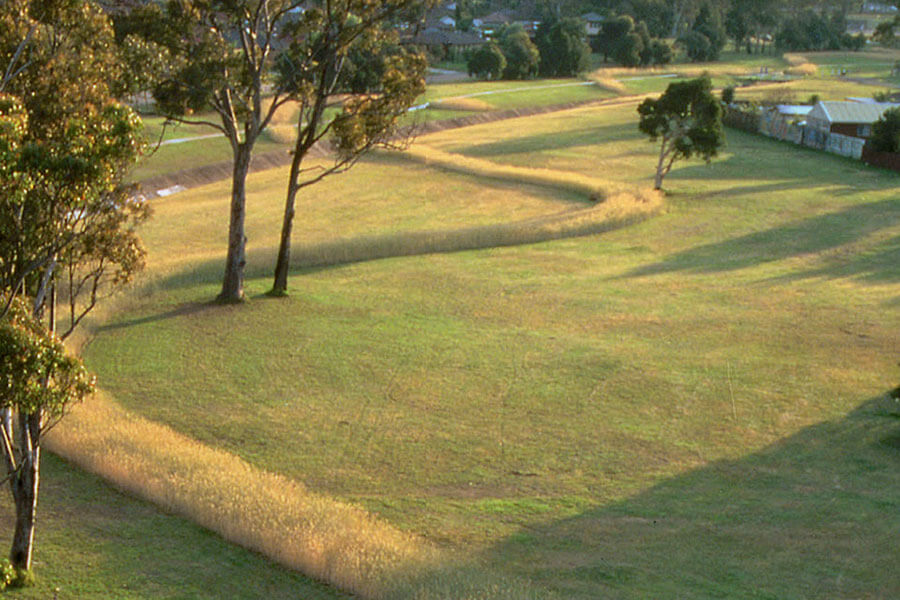Recreating a creek ecosystem to manage urban stormwater
The Restoring the Waters project demonstrates how we can extensively improve the way we manage stormwater and flood protection in our urban areas and suburbs. At the same time we can add value to often-underused public land around urban infrastructure.
Anticipating the degeneration of existing urban drainage infrastructure, the project removed an old concrete-lined stormwater channel and reinstated a naturally functioning but manufactured creek system that captures run-off and reduces pollution in the receiving waters.
Starting with a vision
The project began with a vision, generated by two landscape architects, about how we can improve the quality and function of urban environments by incrementally restoring natural ecosystems in river corridors. The vision was to improve water quality but also to rethink how we use and value public land reserved for drainage infrastructure.
Drainage corridors can become attractive, usable, landscaped open spaces that sustain urban biodiversity and provide much-needed space for recreation.
Creating a local park
The creek and urban floodplain now form the foundation of a revitalised local park which demonstrates total catchment management principles. The landscape design did not attempt to return the stream to its original pristine condition but focused on creating a more sustainable environment in harmony with urban living.
Collaborating across disciplines
The landscape architects took their original concept to the Australian Conservation Foundation. Together they successfully applied to the NSW Environmental Trust for grant funding to realise the unique waterway restoration strategy.
The team assembled for the project balanced landscape design, science, engineering, and artistic vision in order to explore and push the boundaries for an urban ecological restoration project. Local councils were also invited to participate, by suggesting further waterways for restoration.
Engaging the community through public art
As part of Clear Paddock Creek’s physical transformation process, the project team examined the cultural context of the restoration work through a series of inspiring and interactive arts projects and programs involving the local community.
One of these, a temporary land artwork called The Memory Line, marked out the path of the original meandering creek line.
Over time the grass changed shape and colour, drawing attention to a process of change and transformation within the landscape. This creative engagement helped to address considerable community uncertainty about safety and flooding, and to build awareness of the benefits of reinstating a natural creek system.
Transforming the environment over time
The project has hugely improved the waterway’s functioning, amenity and value to the local community, while still providing flood protection.
Lessons learnt
Seventeen years on, this project still serves as an exemplar for urban stormwater infrastructure projects.
By taking a creative, collaborative, and holistic approach, landscape design can recast urban issues like flooding, stormwater pollution, and failing infrastructure. In this instance, rather than replacing like with like, the project has successfully pushed the boundaries of bioremediation in the interests of achieving multiple environmental and community benefits.



